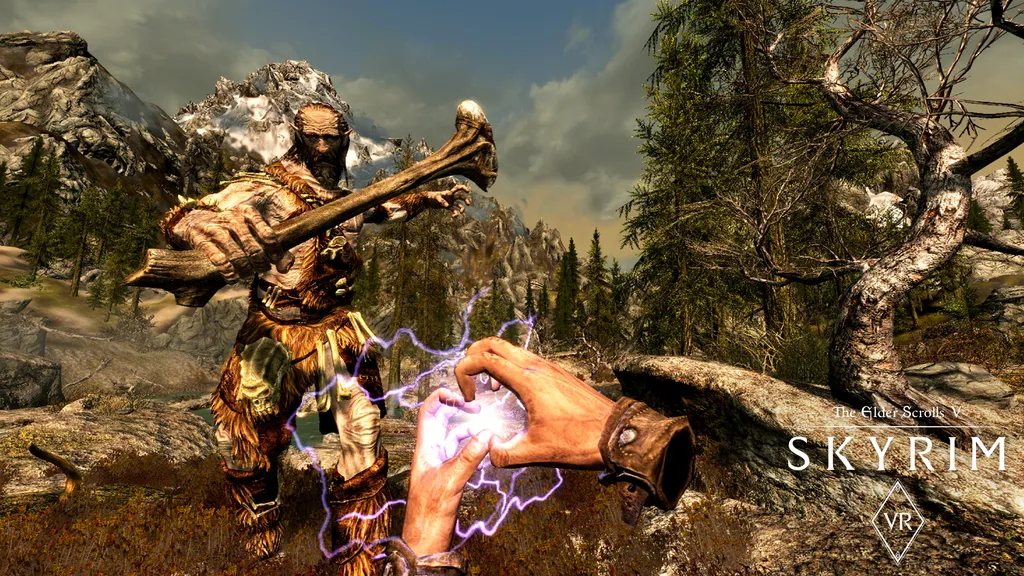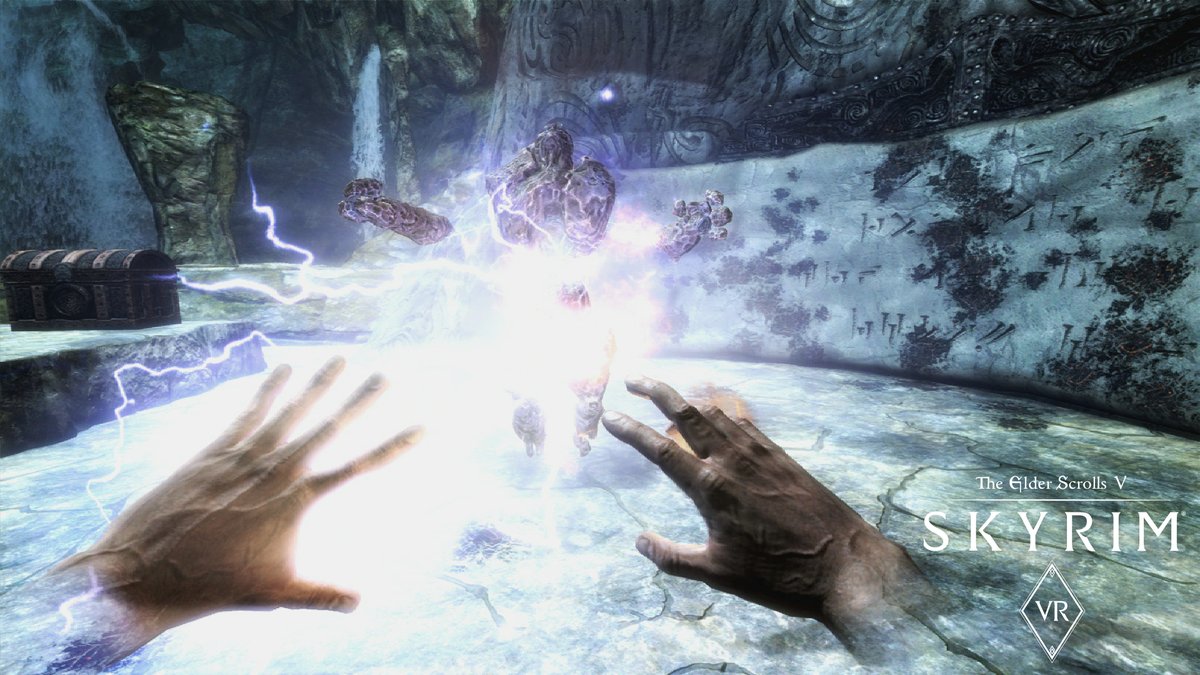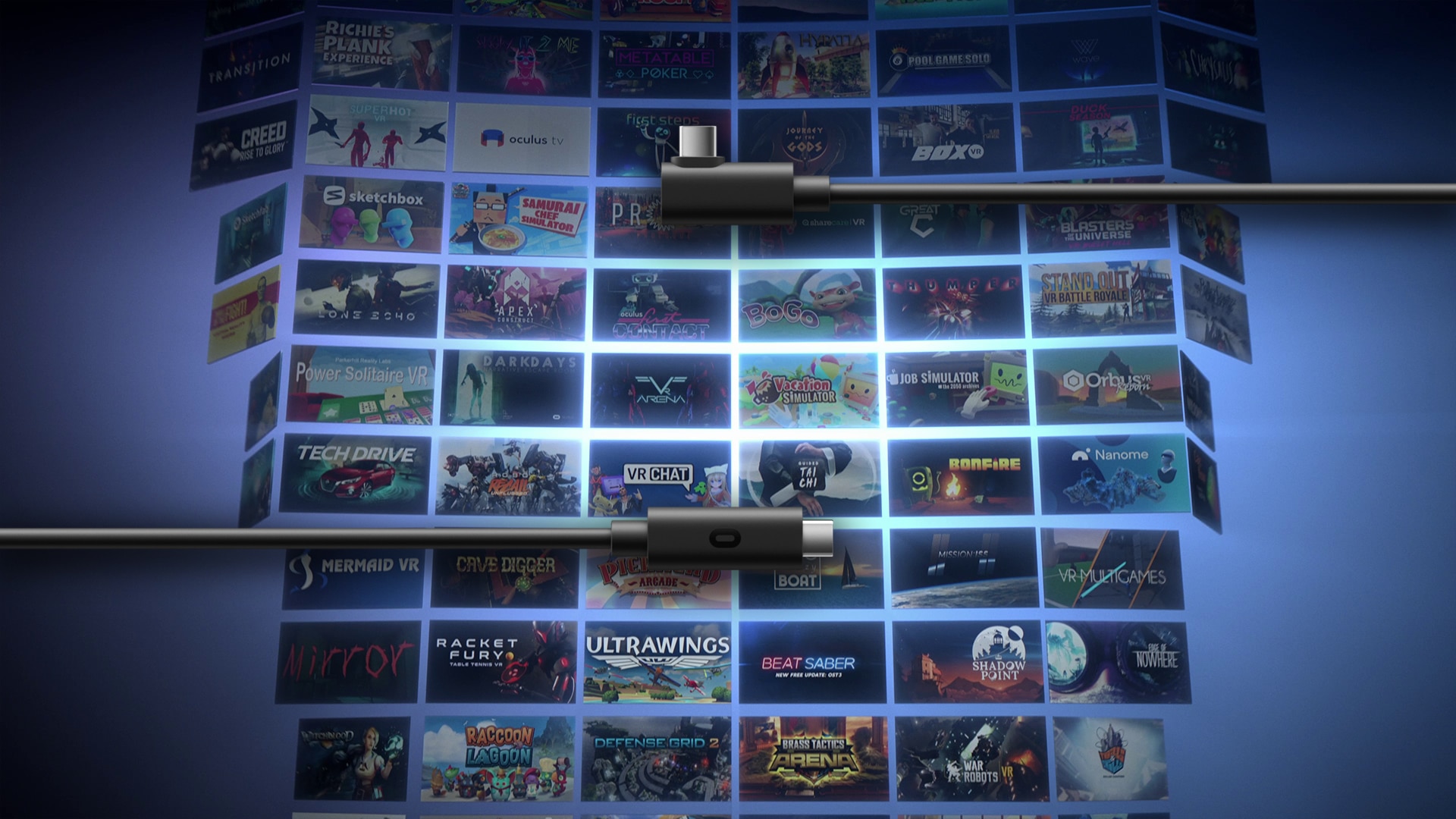The Elder Scrolls V: Skyrim is still one of the largest, most immersive, and greatest VR games out there. It may not have been designed with VR in mind when it originally released back in 2011, but this VR adaptation does a serviceable job of shoving Tamriel’s northernmost region into VR headsets.
Now Skyrim VR of course released first on PSVR, but then later came to PC VR headsets — including mods. As a result, it’s still one of the most exciting games to play because the active modding community continues to deliver amazing updates. Here’s how to install mods if you’re curious.
Last year we covered an early (and outdated) method of streaming PC VR content to Oculus Quest using RiftCat and VRidge, but it’s far from the ideal method these days. So the rest of this article will cover how to play Skyrim VR on Oculus Quest, the best options out there, and what you need to make it happen.
What You Need To Play Skyrim VR On Oculus Quest
For the most part, in order to play Skyrim VR on Oculus Quest you just need good internet and a VR-ready PC, in addition to your Quest headset. But let’s get into the specifics of what the “recommended” specs look like in order to run Skyrim VR comfortably:
- Processor: Intel Core i7-4790 or AMD Ryzen 5 1500X
- Memory: 8 GB RAM
- Graphics: Nvidia GeForce GTX 1070 8GB / AMD RX Vega 56 8GB
Going above and beyond these settings is of course encouraged so that you can take full advantage of the Skyrim VR modding community and try to negate any performance concerns.
You can grab Skyrim VR on Steam at its regular price of $59.99 or wait on a sale.

Skyrim VR On Quest: Wired vs. Wireless
There are two fundamentally different ways to play a PC VR game on an Oculus Quest headset. You can plug it into your PC directly using a USB-C cable via the Oculus Link feature, which tells your computer to treat the Quest like a Rift S essentially, or you can stream PC VR content to your Quest wirelessly. Interacting with VR content in this way requires a very strong 5Ghz WiFi connection to avoid latency issues.
Naturally, there are pros and cons to both approaches. The major benefit of playing PC VR games on Quest with a wire is a dedicated connection that ensures higher graphical fidelity and avoids added latency. The quality of the streamed solution is extremely dependent on the quality of your WiFi router and the strength of your connection. But then in the case of the wireless streaming method, it’s difficult to articulate just how amazing the added value of wireless roomscale movement is. It’s truly a game changer.
To see comparisons wit ha single game focused on Link vs. PC VR content streaming on Quest, check out this breakdown of Half-Life: Alyx.
Oculus Link Cable Recommendations
If you have a VR-ready PC that also meets the minimum requirements for Skyrim VR and want to go the direct cable route, make sure that the PC also meets all compatibility requirements for Oculus Link. Then, the only other physical equipment you’ll need is a USB-C cord that is compatible with Oculus Link.
The easiest option to adopt with the least hassle is the official Oculus Link Cable, available to purchase from Facebook. It is a 5m, fibre optic cable that is relatively thin and provides good flexibility, with USB-C connectors on both ends.
The official cable is pretty much guaranteed to work, provided you have a USB-C port on your computer that is the USB 3.1 Gen 2 standard. If you only have USB-A ports, you’ll need to buy a USB A to C adapter to use the official cord. Make sure that both the adaptor and the USB-A port on your computer are USB 3.1 Gen 2.
Recently, Facebook also upgraded the Oculus Link platform so that USB 2.0 cables will work as well and as a result, all USB 3.0 cables have even higher fidelity than before.
For options other than the official Oculus Link Cable, check out our article on building a USB cable solution that works with Oculus Link. And for instructions on how to use Oculus Link with your Quest to access PC VR content, check out this Link-dedicated guide.
Virtual Desktop Wireless PC VR Streaming For Quest
First and foremost, you will need to purchase and download Virtual Desktop from the Oculus Store for Quest.
However, the default store version of Virtual Desktop does not allow you to stream games to the headset wirelessly. To do that, you’ll need to sideload a patched version of the app using SideQuest, which enables the functionality, after you’ve already bought and installed the official version.
If you don’t know how to sideload or use SideQuest, you can check out our guide on the matter here. You can find and install the alternate Virtual Desktop app by searching for it in the ‘Games and Apps’ section of SideQuest. The sideloaded version of Virtual Desktop still checks for a valid app licence, which is why you’ll need to buy the Oculus Store version first. This patch was released by the actual creator of Virtual Desktop, so it’s a legit download.
Once you have the sideloaded version of Virtual Desktop installed, you will also need to install the streamer app on the same PC from which you want to stream Skyrim VR. This is available on the Virtual Desktop website.
With the streaming app installed and opened, enter your Oculus username into the Streamer app’s menu on your PC.
Then, launch Virtual Desktop on your Oculus Quest and enter SteamVR to play Skyrim VR or any other PC VR game wirelessly from your Quest.
However, there are some important caveats: Virtual Desktop is not as much of a ‘works-out-of-the-box’ solution as Oculus Link. You’ll likely need to do some tweaking to adjust the performance, visuals, and latency depending on your personal internet quality and router configuration.
Some users get great visual fidelity with very low latency through Virtual Desktop, while others struggle to get consistent performance. It will all depend on the quality of you internal connection between your router, PC and Oculus Quest.
Here are some things to check to ensure optimal performance:
- Make sure that your Quest is connected to a 5Ghz network.
- Make sure that your PC is connected to your router via ethernet and not Wi-Fi.
- Try to play as close to your router as possible, with minimal physical interference from walls, furniture and the like.
In our experience, we’ve found your mileage with Virtual Desktop can vary greatly depending on your equipment and setup. There may also be additional steps which we’ve seen recommended by others – such as changing security settings on your router – that may improve you performance even more. You’ll just have to see what’s required for your situation and setup.
That should cover the basics of how to play The Elder Scrolls V: Skyrim VR on the Oculus Quest using Oculus Link or Virtual Desktop. Any questions? Put them down in the comments and we’ll see if we can help out.





























